
Sun-drenched rooftops are becoming a common sight as more and more people embrace solar panels as a sustainable and cost-effective energy solution. But, what about the energy we generate but don't use immediately? That's where solar batteries come into play, storing that precious power for when you need it most.
Though the thought of installing solar panels and batteries might seem a bit overwhelming, it doesn't have to be. With the right knowledge and a bit of guidance, it's a journey you can navigate with confidence.
On this page, we'll shine a light on the benefits of solar panels and their companion batteries, demystify the installation process, share some essential maintenance tips, and answer those common questions that might be buzzing in your mind.
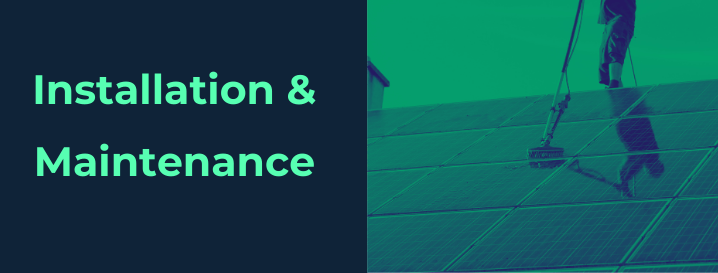
The transition to solar energy is a significant step towards a greener future, and understanding the installation process can make the journey smoother. According to a 2020 report by the International Energy Agency (IEA), solar power is the fastest-growing renewable energy source, with a 22% increase in global installations [1] compared to the previous year.
The installation process, while intricate, can be distilled down to a series of steps that ensure your home or business is equipped with an efficient, safe, and long-lasting solar energy system.
The first step in the solar panel installation journey is setting up the scaffolding. This isn't just about reaching those lofty heights; it's crucial for ensuring the safety of the installation team. The scaffolding serves as a sturdy platform for the solar installers to work from, significantly reducing the risk of accidents.
With the scaffolding securely in place, the next step is to install the solar panel mounts. These aren't just any old fixtures; they're the backbone of your solar system, securely attaching the panels to your roof or ground level. They provide a firm base for your panels, optimising energy production.
These mounts are designed to stand up to various weather conditions, from blazing summer heat to howling winter gales. The National Renewable Energy Laboratory (NREL) says, properly installed mounts can withstand wind speeds of up to 140 miles per hour [2]. This ensures your panels stay put, come rain or shine.
Once the mounts are firmly in place, it's time for the stars of the show: the solar panels. They are carefully positioned on the mounts, your solar installer will focus on securing maximum exposure to direct sunlight, which optimises energy production.
The panels are then securely fastened to the mounts, ensuring they can stand up to strong winds and harsh weather conditions.
With the solar panels now in place, the next step is to connect them in a series. This creates a flow of direct current (DC) electricity. This isn't just about connecting the dots; the wiring needs to be done correctly to ensure efficient energy transfer and squeeze the maximum power output from your solar panel kit.
This inverter plays a very important role in your solar pv system, converting the direct current (DC) electricity generated by your solar panels into usable alternating current (AC) electricity. This conversion is essential, as you'll find most appliances in UK homes and businesses run on AC power.
If you've chosen to include solar batteries in your system, this is the point where they're integrated. The solar inverter is connected to the battery system, creating a storage solution for any excess electricity generated by your solar panels. This stored energy can be used whenever needed, maximising the efficiency of your solar pv system.
The final stage of the installation process involves connecting the solar inverter to your home's consumer unit. This step integrates the solar energy production with your home's electrical system, allowing the solar energy to power your appliances and devices. This connection reduces your reliance on grid electricity, potentially saving you money on your energy bills.
Key Takeaways:
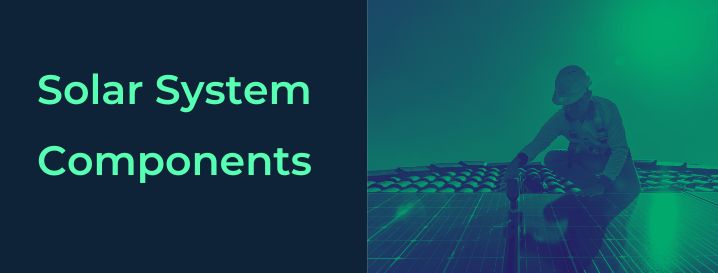
To truly grasp the solar panel installation process, it's helpful to get acquainted with the various components that make up a solar system. Here's a closer look at each one:
These are the heart of any solar system. They use sunlight and convert it into electricity through a process known as the photovoltaic effect. Hence they are often referred to as solar PV panels.
Inverters play a vital role in making the electricity generated by your solar panels usable for your home or business. They convert the direct current (DC) electricity produced by the panels into alternating current (AC) electricity, which is the standard used by most appliances.
Batteries aren't always included in solar systems, but they can be a valuable addition. They store excess energy produced during the day, which can be used at night or during power outages.
These systems securely attach the solar panels to your roof or ground level. They ensure the panels are safely and optimally positioned for maximum efficiency.
This device keeps track of how much electricity your solar system produces, helping you monitor your energy production and potential savings. It's a great tool for keeping an eye on the effectiveness of your solar investment.
Think of these as the emergency exits of your solar system. They allow you to safely disconnect the system for maintenance or in case of an emergency. There are usually two types - one between the solar panels and the inverter (DC isolator), and another between the inverter and the consumer unit (AC isolator).
While not essential, a solar monitoring system is like having a personal trainer for your solar panels. It provides real-time data about the performance of your solar panels, helping you spot any issues and optimise your system's performance.
Average UK prices for the solar components:
| Component | Average UK Price |
|---|---|
| Solar Panels | £5,000 |
| Inverters | £800 |
| Batteries | £6,000 |
| Mounting Systems | £1,500 |
| Generation Meter | £200 |
| Disconnect Switches | £150 |
| Solar Monitoring | £600 |
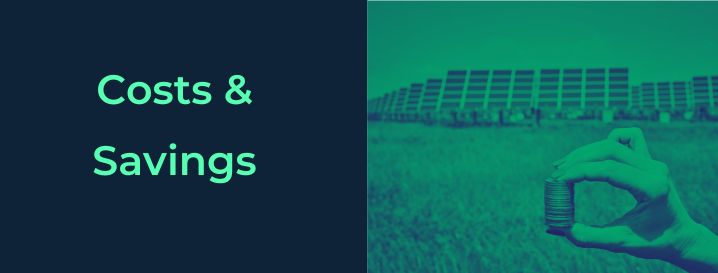
When it comes to solar panel installation, it's not just about harnessing the sun's energy and saving the planet. It's also about understanding the financial implications. So, let's take a deep breath and dive into the costs and potential savings associated with solar panels.
Think of export payments as your reward for being a good solar citizen. You've installed solar panels, you're generating your own electricity, and sometimes, you're producing even more than you need. So, what happens to that extra power? Well, it goes back into the grid, and you get paid for it!
Simply put, export payments are the money you earn from selling your surplus electricity back to the grid. It's like having a mini power station on your roof!
How are they Calculated?
The amount you earn depends on the tariff rate, which can vary. This rate is applied to each unit of electricity you export, turning your surplus power into pounds.
Since tariff rates can differ, it's important to do your homework and find the best deal in your area. Your solar installer can be a great source of information for this
Typically, you'll see these payments popping up in your bank account every quarter. It's like getting a little bonus for helping to power your community!
Here are some of the most popular export traffifs available:
| Energy Supplier | Tariff | Rate (p/kWh) |
|---|---|---|
| Octopus Energy | Octopus Flux | 24p |
| Outgoing Fixed | 15p | |
| OVO Energy | Ovo SEG Tariff (with battery) | 20p |
| Ovo SEG Tariff | 15p | |
| Scottish Power | SmartGen+ | 15p |
| SmartGen | 12p | |
| British Gas | Export & Earn Flex | 6.4p |
| EDF | Export Variable Value | 5.6p |
| E.ON | Next Export Exclusive | 5.5p |
| Shell Energy | Seg V1.1 Tariff | 3.5p |
| Utility Warehouse | UW SEG – Standard | 2p |
| E | E Seg | 1p |
Please note that these rates are correct as of 05/01/24 and are subject to change, and it is recommended to confirm the exact rates and terms and conditions with your chosen supplier before committing.
Have you heard about the Microgeneration Certification Scheme (MCS)? It's been a game-changer for UK solar installations.
It's a seal of approval that tells you a solar panel, and the way it's installed, meets some pretty tough standards. Since this scheme kicked off, we've seen the number of MCS-certified installations go up and up.
It's like watching a kid grow, you know? More and more people are getting on board with solar energy, and MCS is their trusted guide.
They know it's good for the planet, and hey, it's not bad for the wallet either, right? And here's the thing: a lot of the incentives out there, the ones that make solar energy even more attractive, they ask for MCS certification.
So, as we're all trying to do our bit for a cleaner, greener future, MCS is there making sure we're doing it right.
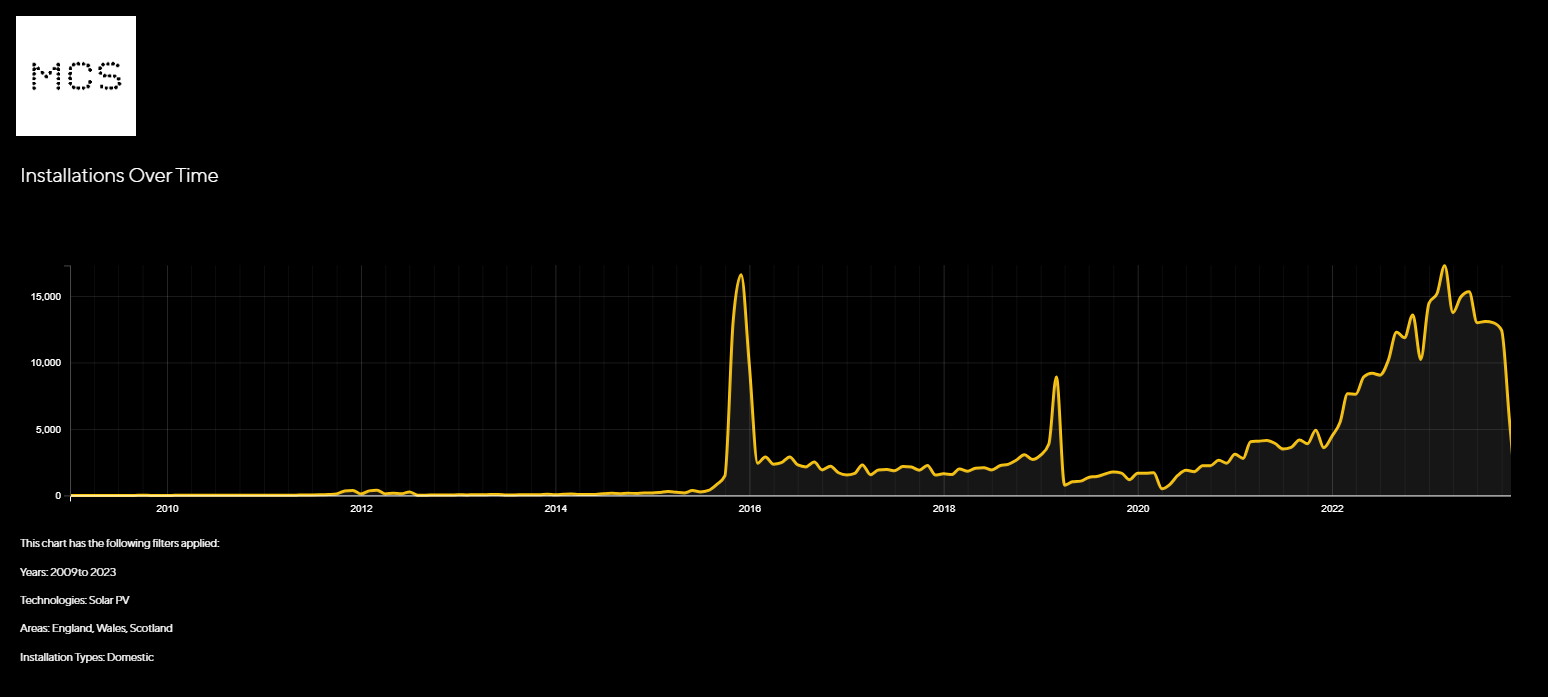
| Year | MCS Certified Installations |
|---|---|
| 2009 | 1,540 |
| 2010 | 29,888 |
| 2011 | 130,404 |
| 2012 | 122,402 |
| 2013 | 94,299 |
| 2014 | 122,612 |
| 2015 | 139,793 |
| 2016 | 41,612 |
| 2017 | 37,874 |
| 2018 | 46,685 |
| 2019 | 82,490 |
| 2020 | 50,173 |
| 2021 | 77,617 |
| 2022 | 183,672 |
| 2023 | 109,312* |
*2023 data is partial (through September)
The costs of solar panel installation in the UK can be a mixed bag, influenced by a variety of factors. From the size of the system to the complexity of your roof, and even the need for scaffolding, it's a bit like a jigsaw puzzle where every piece affects the final picture. Here's how to make sense of it all:
The size of the solar panel system you choose will naturally impact the cost. A larger system with more panels will cost more than a smaller system.
If your roof is particularly steep or has multiple levels, the installation may be more complex and therefore more costly.
Sometimes, additional equipment like scaffolding may be required, which can add to the installation costs.
Each home is unique, so getting a detailed estimate from a solar panel installer is a good way to understand the costs specific to your situation.
It's always a good idea to do a bit of shopping around. Research different solar panel systems and installer options to get competitive quotes.
Warranties can offer protection against long-term costs. Be sure to understand what is and isn't covered by your installer's warranty.
Here's what you might expect to pay for different system sizes, according to the Solar Trade Association:
| System Size (kWp) | Average Cost |
|---|---|
| 1 | £1,500 - £3,000 |
| 2 | £3,000 - £5,000 |
| 3 | £4,000 - £6,000 |
| 4 | £6,000 - £8,000 |
These are average figures and the actual cost will depend on your specific circumstances. Always get a solar quote for the most accurate estimate.
Solar panels are a topic of growing interest, especially as we strive towards more sustainable energy sources. But are they worth the investment in the UK? Let's shed some light on this.
First off, the cost of solar panels can vary quite a bit. On average, you might be looking at anywhere between £5,000 and £11,5001. For a typical three-bedroom house, the cost usually lands around £7,0002.
But what about savings? How much can you really cut down on your electricity bills? Well, it depends on the size of your solar system. Here's a quick look:
| System Size | Annual Savings |
|---|---|
| 3 kW | £160 |
| 4 kW | £270 |
| 5 kW | £320 |
| 6 kW | £430 |
On average, you can expect to save between £170 and £565 on your electricity bills annually.
So, when will you break even? The payback period can vary depending on several factors, including your energy usage and the size of your solar system. For a three-bedroom house with a £5,500 solar panel system, the payback period is typically 6-7 years1. Without the Smart Export Guarantee (SEG), it may take between 13+ years1
| House Size | Solar Panel System Size | Expected Payback Period |
|---|---|---|
| Small (1-2 bedrooms) | 2-3 kW | 10-15 years |
| Medium (3-4 bedrooms) | 3-4 kW | 8-12 years |
| Large (5+ bedrooms) | 5-6 kW | 7-10 years |
These figures are approximations and can vary based on the factors mentioned earlier. For a more accurate estimate, it's recommended to get a personal quote from a solar panel installer who can assess your specific circumstances.
Key Takeaways:
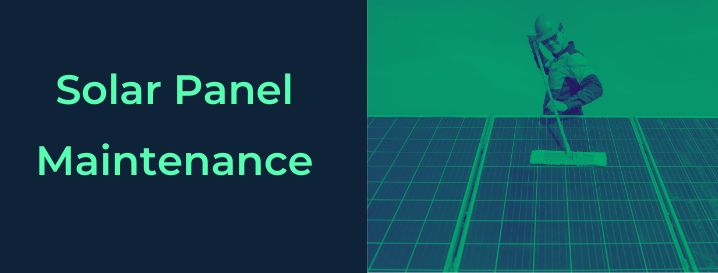
Remember, your solar panel system needs a bit of TLC to keep it performing at its best. Let's look into some handy tips on how to maintain and service your solar panels to maximise their efficiency and lifespan.
Keeping an eye on your solar panels' performance is key to spotting when they might need a bit of a tune-up. So, what should you look out for?
Well, if you notice a dip in your power output, it might be time to call in the solar experts. Other tell-tale signs include a misbehaving inverter, unusual noises, or parts that seem to have taken on a life of their own. And if your battery storage seems to be running out of steam quicker than usual, that's another sign that your system might need a bit of attention.
By regularly checking your system and keeping a logbook of maintenance checks and system performance, you'll be able to spot any potential issues early on. This means you can get them fixed promptly, ensuring your solar panels continue to bask in the sun and power your home efficiently.
Like all of us, solar panels can have their off days. But don't worry, most issues you might encounter are usually pretty straightforward to fix.
Solar panels can get a bit grubby over time due to dust, pollen, or other debris. A gentle clean with a soft brush and some soapy water can do wonders.
Trees or nearby buildings throwing shade on your panels? This can reduce their efficiency. A simple solution is to trim back any overhanging branches or consider a more optimal placement for your panels.
Birds can sometimes leave their mark on your panels. Regular cleaning can help keep your panels bird dropping-free and efficient.
If your inverter is acting up, it can affect your system's performance. Regular checks and timely repairs or replacements can keep your system running smoothly.
Things like loose mountings can pose a risk to your solar panel kit. Regular maintenance checks can help spot any potential issues and keep your system safe and sound.
Remember, while some maintenance tasks can be done by yourself, others will require professional help. Always consider safety first!
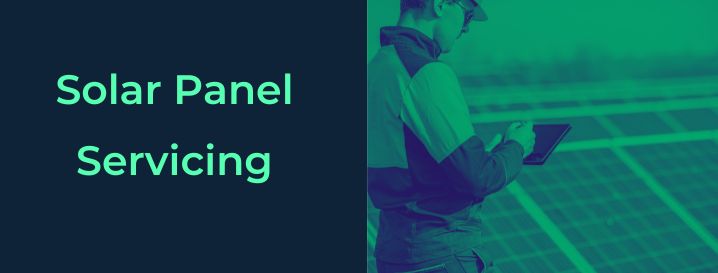
Just like your car needs its MOT, your solar panels need regular servicing to keep them working at their best. This is where professional service technicians come in. They're the experts trained to spot and fix any issues, helping to minimise any downtime of your system.
Regular service checks not only ensure your panels are working at their maximum efficiency, but they can also extend the lifespan of your system. It's all about keeping your solar panels happy so they can keep your home powered.
And for that extra peace of mind, many of the best solar panel installers offer warranties. This means you're covered just in case anything goes awry, giving you one less thing to worry about.
So, don't forget to schedule your solar panel service checks. It's a small step that can make a big difference to the performance and longevity of your solar panel system.
Curious about what goes on during a solar panel service? Let's pull back the curtain:
The service kicks off with a thorough visual check. The technician will look for any visible issues such as damage to the panels, frames, or mounting equipment.
Over time, dirt, dust, and bird droppings can accumulate on your panels, reducing their efficiency. The technician will give your panels a good clean to ensure they're capturing as much sunlight as possible.
The technician will check the inverter, wiring, and connections to ensure they're all in good working order. They'll also check the system's power output to make sure it's performing as expected.
The mounting system secures your panels, so it's vital to ensure it's sturdy and stable. The technician will check for any loose fittings or signs of corrosion.
The technician will review the system's performance data, looking for any trends or issues that could indicate a problem.
After the service, you'll receive a report detailing the health of your system, any issues found, and the work done.
To keep your solar panels working at their best, a regular cleaning routine is a must. But how do you go about it? Here's a simple guide:
All you need is a hose, a soft brush or sponge, and a mild cleaning solution.
Aim to clean solar panels in the early morning or late evening, as direct sunlight can cause rapid evaporation and leave streaks.
As a rule of thumb, you should clean your solar panels between two to four times a year.
Remember, the aim is to keep your panels free from dirt, dust, bird droppings, and other debris that can block sunlight and reduce your system's efficiency.
So, grab your cleaning tools and give your solar panels the care they deserve. After all, clean panels are happy panels – and happy panels mean maximum energy production for your home.
Rooftop cleaning can be risky due to the height and potential for slips or falls. Professional cleaners have the right training and equipment to do the job safely and effectively. Plus, they'll know how to clean your panels without causing any damage.
For your solar panels to soak up as much sunlight as possible, it's crucial to keep them clear of any potential obstructions. Here's how you can do this:
If you have trees near your panels, keep an eye on any branches that might be casting a shadow. A quick trim can help ensure your panels get all the sunlight they need.
Similarly, keep a lookout for any objects that might be blocking the sun. This could be anything from a new building to a simple garden umbrella.
Regular checks of your panel mounting systems are also crucial. You want to make sure there are no loose parts or potential hazards that could damage your panels or affect their performance.
By keeping your panels clear and secure, you can maximise their efficiency and keep them working at their best.
Here's how to ensure they get their daily dose of sunshine:
When installing your panels, choose a spot that gets plenty of direct sunlight. Avoid any areas that are prone to shading.
Keep an eye on nearby structures, trees, or buildings that could cast a shadow on your panels.
Keep a regular check on your panel placement to ensure they're getting maximum sunlight exposure. As the seasons change, the sun's position can shift, which might affect the amount of sunlight your panels receive.
Not sure where to place your panels? Don't hesitate to consult with solar panel experts. They can guide you on the best placement options to maximise sunlight exposure.
Remember, the more sunlight your panels get, the more power they can generate.
Your solar panel system's inverter is like its heartbeat, and the flashing green light is a sign of good health. Here's why it's important:
A green light on your inverter shows that your solar panels are happily generating electricity.
If the light is blinking green, that's even better. It's another sign that your panels are producing energy.
It's a good idea to regularly check your inverter lights. They're a handy indicator of your system's performance.
If your inverter isn't flashing green, it might be time to call in the experts. Your solar panel installer can conduct further checks and maintenance to get your system back on track.
Remember, a flashing green light on your inverter is a positive sign. It's like your solar panel system giving you a thumbs up! So, keep an eye on those lights and enjoy the peace of mind that your panels are doing their job.
Monitoring your solar panel system's day-to-day performance helps in identifying any anomalies. Observing energy generation patterns, tracking energy production with a generation meter, and comparing power output with previous days or months are good practices in monitoring system performance. In case of significant energy production decrease, it is advisable to consult solar panel installers for maintenance checks.
Staying on top of your solar panel system's maintenance can be a breeze with a maintenance logbook. Here's why it's a good idea:
A logbook allows you to keep track of all maintenance activities. This includes panel cleanings, service checks, system issues, repairs, and parts replacement.
By recording dates of maintenance, you can easily see when your next service is due.
Your logbook can also serve as a handy place to keep important documents like warranties and service contracts.
With a comprehensive record of all maintenance activities, you can rest easy knowing that your solar panel system is being well looked after.
So, grab a notebook and start your own solar panel maintenance logbook. It's a simple tool that can make a big difference in the care and maintenance of your solar panel system.
Solar panels are built to last, but sometimes, they can encounter a few bumps along the way. If your panels do sustain damage, here's how to handle it:
First, try to figure out what's wrong. Is there visible damage to the panels, or are they not performing as they should?
If possible, take photos of the damage. This can be helpful when you're discussing the issue with your installer or insurance company.
Reach out to your solar panel installer or a professional solar panel repair service. They can assess the damage and recommend the best course of action.
Many solar panels come with warranties that cover certain types of damage. Check your warranty to see if the repairs might be covered.
Depending on your home insurance policy, the damage to your solar panels might be covered. It's worth getting in touch with your insurance company to find out.
It's important to act quickly if your solar panels are damaged. The sooner the damage is repaired, the sooner your panels can get back to doing what they do best - harnessing the power of the sun.
Key Takeaways:
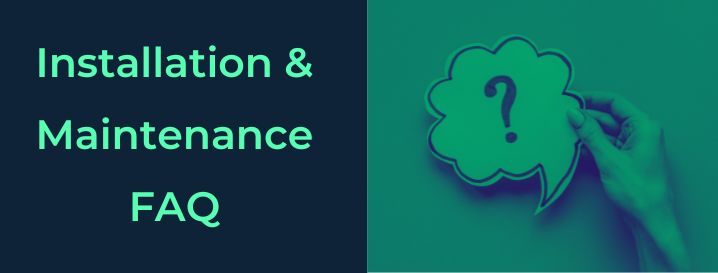
As more people turn to solar power, it's only natural to have a few questions. Here are answers to some of the most common questions about solar panel installation and maintenance:
No, you don't need to turn off your solar panels to clean them. These panels are designed to cope with direct sunlight and heat, so it's safe to clean them while they're operational. Cleaning involves hosing down the panels to remove dust, dirt, and bird droppings.
For stubborn grime, use a soft, non-abrasive sponge or cleaning tool. Regular cleaning helps maintain the efficiency and power output of your solar panels. Always remember, safety first - if your panels are hard to reach or high up, consider hiring a professional cleaner.
The optimal time to clean solar panels is either early morning or late evening when the sun's rays are less intense.
Cleaning during these cooler periods not only makes the process more comfortable but also minimises the risk of rapid evaporation, which can lead to streaks or water spots.
Cleaning solar panels when they're cool ensures a more effective cleaning process and helps maintain their efficiency.
Solar panels should ideally be serviced once a year. This routine check-up allows for potential issues to be spotted and rectified early, ensuring your system operates at its peak efficiency.
An annual service by a professional can include maintenance checks, cleaning, and system inspections. Regular servicing not only gives you peace of mind but also optimises energy production, maintains system efficiency, and can extend the lifespan of your panels.
Whether you need permission to install a solar PV system can depend on where you live. Some local authorities may require you to obtain planning permission or building permits, especially for larger installations or if you live in a listed building or conservation area.
It's important to check with your local council or a professional solar panel installer to understand the specific regulations in your area. They can guide you through any necessary steps to ensure your installation is compliant with local rules, ensuring a smooth and hassle-free process.
There are several reasons why solar panels might stop working:
Faulty Inverter: The inverter, which converts the direct current (DC) produced by the panels into alternating current (AC) for home use, can sometimes fail.
Panel Damage: Physical damage to the panels, such as cracks or chips, can disrupt their ability to generate electricity.
Electrical Issues: Problems with the wiring or connections can prevent electricity from reaching your home.
Shading: If something is blocking the sunlight from reaching your panels, such as a tree or a new building, this can reduce their output.
Insufficient Maintenance: Like any piece of equipment, solar panels need regular checks and maintenance to keep them working efficiently.
If your solar panels stop working, it's important to contact a professional as soon as possible to identify and fix the issue.
Cleaning your solar panels is a simple process, but it's important to do it correctly to avoid damaging them. Here's a step-by-step guide:
Rinse the Panels: Start by rinsing your solar panels with a hose to remove loose dirt and debris. This helps prevent scratching the panels in the next step.
Clean the Surface: Use a soft-bristled brush or a non-abrasive cloth to gently scrub the panels. You can use water or, if necessary, a mild detergent. Avoid using harsh chemicals that might damage the panels.
Rinse Again: After you've cleaned the panels, rinse them again to remove any soap or residue.
Dry (Optional): If your local water is hard (high in minerals), you might want to dry the panels to prevent water spots from forming.
Always safety first. If your panels are high up or hard to reach, consider hiring a professional cleaner. Always follow the cleaning recommendations provided by your solar panel installer.
The time it takes to install solar panels can depend on a number of factors, but typically, a standard residential solar panel installation might take between 1 to 3 days. Factors influencing this include:
System Size: Larger systems naturally take longer to install than smaller ones.
Installation Complexity: If the installation involves complex wiring or needs additional equipment, this can extend the time needed.
Weather Conditions: Adverse weather can delay the installation process.
Roof Type and Accessibility: Certain roof types or hard-to-access areas can make the installation more time-consuming.
While speed may be a consideration, it's important to ensure the job is done correctly. Hiring an experienced solar panel installer can help ensure a smooth and efficient installation process.
Deciding if solar panels are right for your home involves considering several factors:
Sunlight Exposure: The amount of sunlight your home receives is crucial. Generally, south-facing roofs with little shade are ideal for solar panels.
Local Regulations: Some areas have restrictions on solar panel installations. It's important to check with your local council or a professional installer for any specific regulations in your area.
Electricity Costs: If your electricity costs are high, you might save more by switching to solar.
Initial Installation Costs: Solar panels can be a significant investment. You'll need to weigh the upfront costs against the potential long-term savings.
Energy Consumption: If your home uses a lot of electricity, solar panels could significantly reduce your bills.
It's always a good idea to consult with a solar panel installer or renewable energy advisor. They can provide a detailed analysis based on your specific circumstances, including your energy consumption patterns, potential savings, and the long-term benefits of installing solar panels.
This can help you make an informed decision about whether solar panels are the right choice for your home.
Congratulations on your new home with solar panels! Here's what you can expect:
Documentation: You should receive a manual or documentation from the previous owner or the installation company. This will give you important information about the maintenance and warranty of your solar panels. Make sure to familiarize yourself with this.
Utility Company: You may need to inform your utility company about the solar panels to ensure the billing and any feed-in tariffs are correctly set up.
System Check: It's a good idea to have a certified electrician inspect the system to make sure everything is in working order.
Maintenance: Regular cleaning and maintenance are essential to keep your solar panels working efficiently. This can often be done yourself, but some tasks might require a professional.
Benefits: Look forward to reduced energy bills and a lower carbon footprint. Solar panels generate renewable energy which can offset your electricity costs and contribute to a more sustainable planet.
If you have any questions or concerns, don't hesitate to reach out to a solar professional or the company that installed the panels. They can provide valuable advice and assistance.
Installing solar panels can be a complex task, and while it's technically possible for a homeowner to do it themselves, it's generally recommended to hire a professional for several reasons:
Expert Knowledge: Professional installers have the necessary training and experience to handle the installation process efficiently and safely.
Local Regulations: In some areas, installations must be done by a licensed contractor. Professionals are familiar with these regulations and can ensure your installation is compliant.
Safety: Working with electricity and on rooftops can be dangerous. Professionals have the necessary safety equipment and training to minimise risks.
Efficiency: A professional installer can optimise the placement and angle of the panels to maximise their output.
Warranties: Some manufacturers may void their warranty if the panels aren't installed by a certified professional.
If you're considering installing solar panels, it's a good idea to get a solar quote from several professional installers.
They can provide a detailed analysis of your home's solar potential and the costs and savings associated with going solar.
The cost of solar panels can vary widely, depending on a range of factors. On average, for a residential solar panel system in the UK, you might expect to pay between £4,000 and £6,000 for a 3kW solar panel system, or between £6,000 and £8,000 for a 4kW system.
These estimates include the cost of the panels themselves, installation, inverter, and VAT.